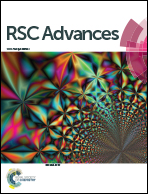Ribosome-inactivating proteins (RIPs) and their important health promoting property
Abstract
Ribosome-inactivating proteins (RIPs), widely present in plants, certain fungi and bacteria, can inhibit protein synthesis by removing one or more specific adenine residues from the large subunit of ribosomal RNAs (rRNAs). In addition to the well-known RNA N-glycosidase activity, RIPs also possess other enzymatic activities such as polynucleotide adenosine glycosidases (PAG), DNase-like activity, superoxide dismutase and phospholipase. The anti-tumor activity of RIPs is one of the most important biological properties. In this review, we have summarized the distribution, sub-cellular location, characteristic expression of genes, enzymatic activity and cellular entry mechanisms of RIPs and further discussed the phylogenic and molecular evolution of RIP genes. We hope to draw attention to the pharmacological properties, effective construction of immunotoxins for clinic usage and potential future applications in cancer therapy of RIPs.


 Please wait while we load your content...
Please wait while we load your content...